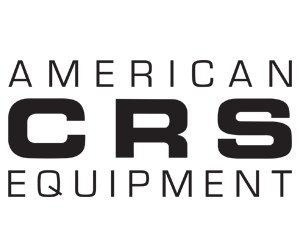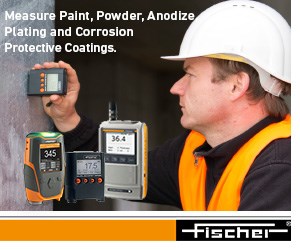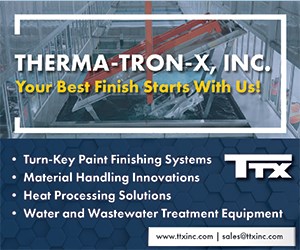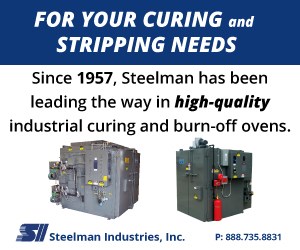ELECTROCOATING
Narrow by Electrocoating Product Category
- Ammeters & Voltmeters
- Ampere-Hour Meters
- Associations, Tradeshows & Professional Groups
- Burners, Gas
- Burners, Gas & Oil (Combination)
- Burners, Oil
- Coils, Liquid Heating & Cooling
- Controls, Burner
- Controls, Color
- Controls, Rinse Tank Concentration
- Controls, Solution Conductivity
- Controls, Temperature
- Current Controls
- Electrical Connectors, Chemical & Corrosion Resistant
- Electrocoatings
- Environmental Test Chambers
- Finishing Systems, Paint, Porcelain Enamel, Powder, Conveyorized
- Flooring, Chemical-Resistant
- Heaters, Immersion
- Hoists, Traveling: Automatically Controlled
- Hoists, Traveling: Manually Controlled
- Hoses, Air or Liquid
- Humidity Cabinets
- Magnets, Tank
- Masking Caps, Discs, Plugs
- Masking, Customized
- Mixers, Stirrers
- Ovens, Convection
- Ovens, High-Velocity
- Ovens, Infrared
- Oven-Temperature Monitors/Curing Analyzers
- Paint-Circulating Systems
- Periodic-Reverse Equipment, Current Interrupters
- pH Electrodes
- pH Meters
- pH Papers
- Programmable Controllers
- Rack Trucks
- Racking/Unracking Machines
- Racks, Plating, Painting & Anodizing
- Rectifier Rebuilding & Repair
- Rectifiers
- Resins, Paint & Powder Coating
- Shop Management Software & Systems
- Software for Finishing
- Spectrophotometers
- Tanks, Metal
- Tanks, Plastic
- Tape, Masking for Plating & Painting
- Temperature Recorders
- Testing Equipment, Abrasion Resistance
- Testing Equipment, Accelerated Weathering
- Testing Equipment, Adhesion
- Testing Equipment, Color
- Testing Equipment, Gloss
- Testing Equipment, Impact Resistance
- Testing Equipment, Paint Film Discontinuity
- Testing Equipment, Paint Film Flexibility
- Testing Equipment, Rectifier Ripple
- Testing Equipment, Salt Spray
- Testing Equipment, Thermal Cycling
- Testing Equipment, Thickness of Coating
- Testing Laboratories, Independent, Water Pollution Control
- Testing Service, Accelerated Weathering
- Thermometers, Pyrometers
- Used Equipment
FAQ: Electrocoating
Is it possible to use an epoxy electrocoat to coat parts made out of neodymium, iron and boron? Are there any special considerations to take when electrocoating this kind of substrate?
Because alloys of neodymium (Nd), iron (Fe) and boron (B) render electrically-conductive metallic structures, they can accept an electrocoat finish. NdFeB alloys are known to be one of the strongest types of permanent magnet materials commercially available today. Their unusual strength has made them ideal candidates for use in today’s powerful computers, cordless motors and other similar industrial applications.
Please keep in mind that the NdFeB alloy parts must be ecoated before they are magnetized, or the parts will be completely covered with any iron filings and small metallic particles attracted to them during processing. The metallic particles are typically present in most process tanks, and depending on the type and quantity, could render the visual appearance and performance of the e-coated parts totally unacceptable for use. Once the NdFeB parts have been electrocoated, they can then be fully magnetized prior to use. (Source: Ecoat Clinic: Using Epoxy Ecoat on NdFeB Parts)
What are the key process and equipment elements required to produce electrocoated parts with consistent class A automotive quality?
Class A electrocoated parts in the automotive and transportation industries are typically parts with high visibility exterior vehicle mounting positions above an imaginary line between the front and rear bumpers. In addition to the surface appearance and visual quality necessary to generate a finished part, automotive Class A electrocoated parts must also provide very high levels of corrosion protection. Oftentimes, Class A automotive electrocoated parts receive a topcoat.
To assess the capability of an existing process and equipment to produce Class A-quality electrocoated parts, evaluate the following key process and equipment areas: substrate, cleaning, pretreatment, film thickness, rinsing, racking and the oven. (Source: Electrocoating Q&A: Obtaining Class A Automotive Part Quality)
What are the best practices for testing an automotive electrocoat system?
Best in class ecoat systems typically employed five common test families to verify continuous conformance: film thickness, adhesion, water immersion, cure and some accelerated corrosion cycle test. Some systems use a sixth family test that either incorporates flexibility (conical or cylindrical bending) or impact resistance (sand chip or stone).
The testing can be performed on a weekly, monthly, semi-annual or annual basis depending on the type of system, type of parts and OEM minimum requirements. The tests can be done in-house or in outside accredited laboratories.
Read the Electrocoat Q&A: Best Testing Practices article for a rundown on each test.
(Source: Electrocoat Q&A: Best Testing Practices)
What paints are the best topcoats for cathodic epoxy electrocoats? Are there any paints that are not compatible or should not be used over the epoxy electrocoat?
Epoxy resins are the most widely universal primers available today. They are compatible with just about any topcoat technology available.
Thermoset topcoat paints (in both liquid and powder forms) typically provide stronger inner-coat adhesion to epoxy electrocoated primed parts than air-dry or force-dry topcoats. Typically, they are the preferred topcoat of choice when extreme performance is needed. The adhesion strength to the primer is significantly improved when the topcoat resin uses heat to polymerize and crosslink as compared with air-dry materials, where they only need dry time to cure.
The textured ecoat surface is coming out with little bumps in various sizes. How can we identify the cause?
The goal is to identify all potential variability influenced by:
- Materials used, such as the specific type and design of the pretreatment and ecoat system;
- Equipment, including maintenance and operation;
- Local manufacturing processes used;
- Environmental conditions affecting both systems;
- Human influences; and
- Potential variability introduced by measurement systems or methodologies used to obtain process control, quality metrics or product performance results.
Unfortunately, almost any process or equipment variable can influence surface quality and therefore be a potential root cause to the issue. Raising the bar on visual surface quality requires that almost every variable and parameter be studied and analyzed.
(Source: How to Identify and Control Poor Ecoat Film Appearance)
Get Listed!
Thousands of people visit this Supplier Guide every day to source equipment and materials. Get in front of them with a free company profile.






